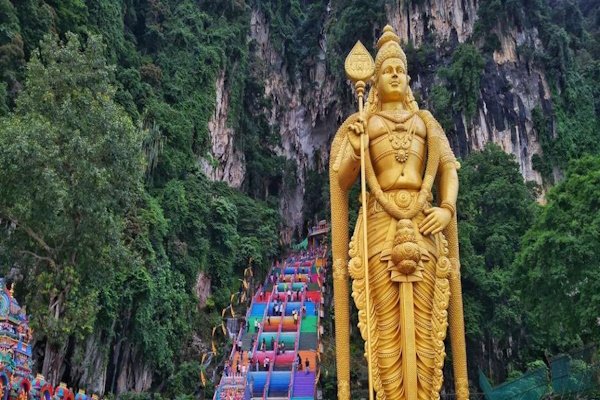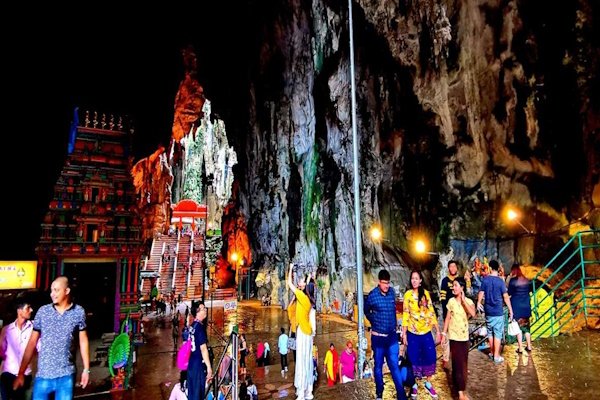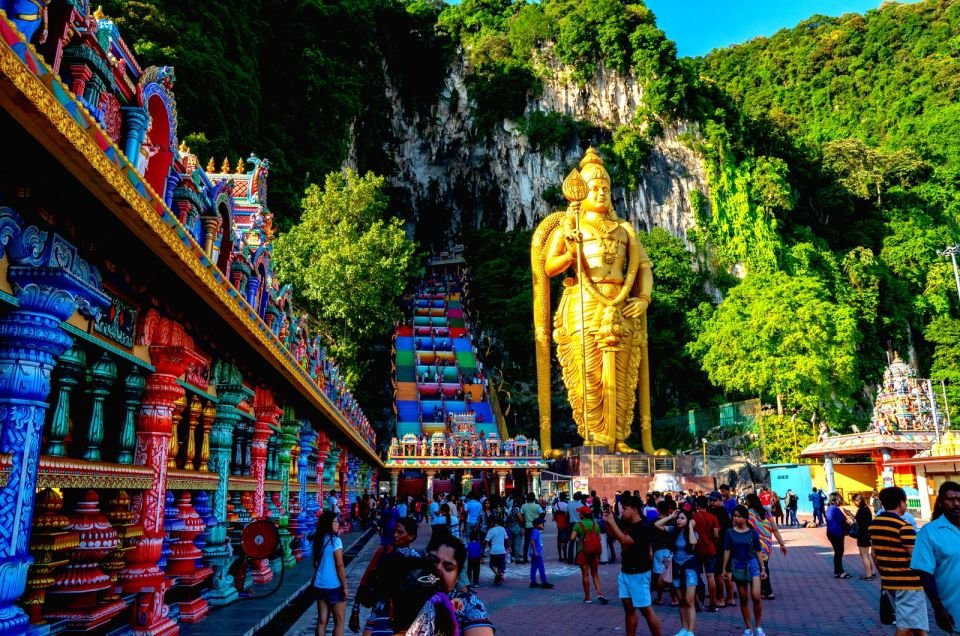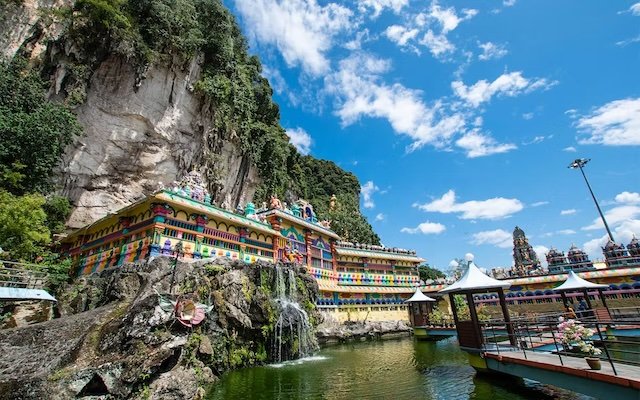Batu Caves: History and Facts
Batu Caves: History and Facts
Batu Caves has a rich history that dates back to the late 19th century. The caves were discovered by American naturalist William Hornaday in 1878. However, it was only in the late 19th century that the caves gained prominence as a religious site.
Explore Batu Cave’s captivating history and facts through our concise timeline and a comprehensive overview.
Quick Facts about Batu Caves in Malaysia
- Location: Batu Caves is located just north of Kuala Lumpur, Malaysia, and is easily accessible from the city center.
- Natural Formation: The caves are set within a limestone hill and are believed to be around 400 million years old, featuring unique cave formations and towering limestone cliffs.
- Hindu Shrine: Batu Caves is home to a series of Hindu shrines dedicated to Lord Murugan, a significant deity in Hinduism, making it a major pilgrimage site, especially during the Thaipusam festival.
- Cathedral Cave: The main and most significant cave is the Cathedral Cave, characterized by a high ceiling and openings that allow natural light to illuminate the cavern.
- Golden Statue: At the entrance stands a striking golden statue of Lord Murugan, which, at 42.7 meters (140 feet), is one of the tallest statues of a Hindu deity in the world.
- Staircase: Access to the main cave involves climbing a steep staircase with 272 colorful steps. The climb provides stunning views of the surroundings.
- Thaipusam Festival: Batu Caves is at the center of the annual Thaipusam festival, a lively celebration marked by processions, elaborate decorations, and devotees carrying kavadis (ornate structures) as acts of penance.
- Dark Caves: Nearby, the Dark Caves offer guided tours, providing insights into the cave’s ecosystem, including rare species of fauna and impressive geological formations.
- Monkey Population: The area around Batu Caves is inhabited by a playful population of macaque monkeys, adding a lively element to the natural surroundings.
- Cultural Diversity: Batu Caves stands as a symbol of Malaysia’s cultural diversity, welcoming visitors from various backgrounds to explore its spiritual, cultural, and natural wonders.
History of Batu Caves: Chronological Timeline
Late 19th Century
1878: Batu Caves was discovered by American naturalist William Hornaday.
1920s
The development of the caves as a religious site continued, and the site underwent further enhancements.
20th Century
1950s: Batu Caves gained popularity as a significant Hindu pilgrimage site.
2006
January 29, 2006: The iconic golden statue of Lord Murugan, standing at the entrance, was unveiled. It is one of the tallest statues of a Hindu deity globally, reaching a height of 42.7 meters (140 feet).
Present
Annual Celebrations: Batu Caves continues to be a focal point of Hindu celebrations, especially during the Thaipusam festival, attracting devotees and tourists alike.
History of Batu Caves: Summary
Batu Caves has a rich history that dates back to the late 19th century. The caves were discovered by American naturalist William Hornaday in 1878. However, it was only in the late 19th century that the caves gained prominence as a religious site.
In 1890, K. Thamboosamy Pillai, an Indian trader, established a shrine dedicated to Lord Murugan, a significant deity in Hinduism, within the main cave.
During the early 20th century, the iconic golden statue of Lord Murugan was added, and the site underwent further development to accommodate the growing number of devotees and visitors.
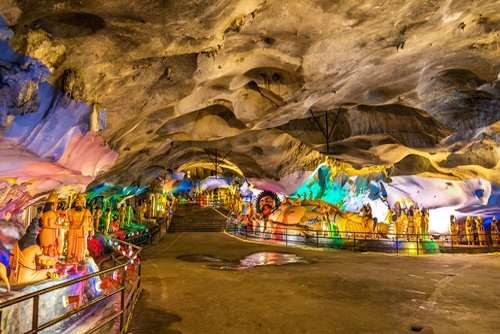
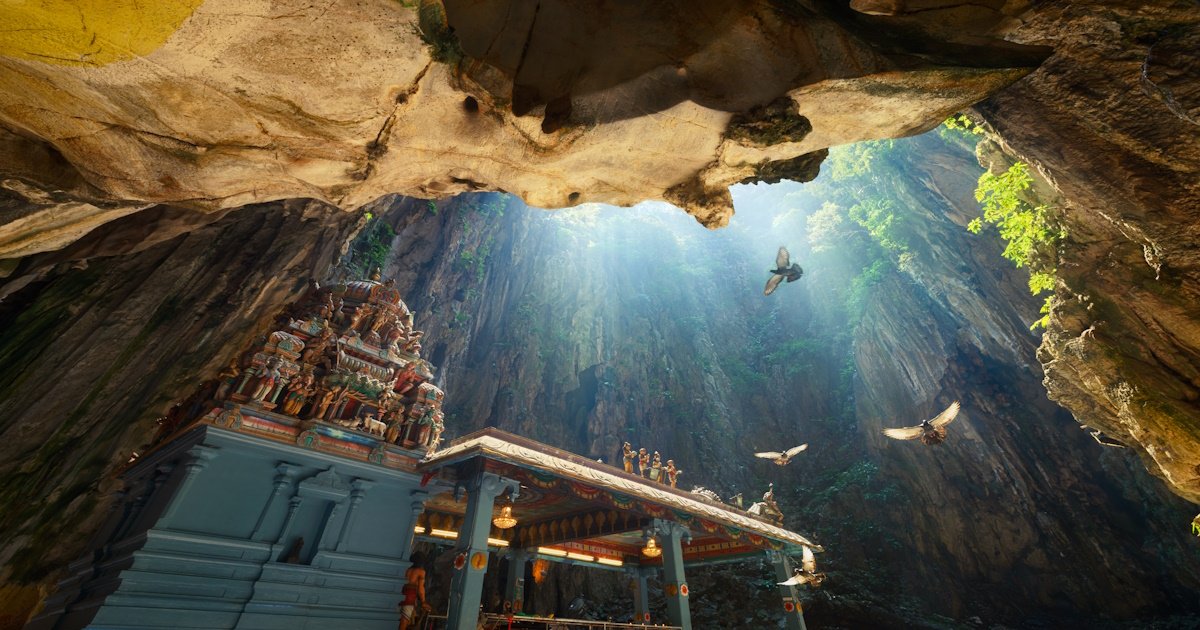
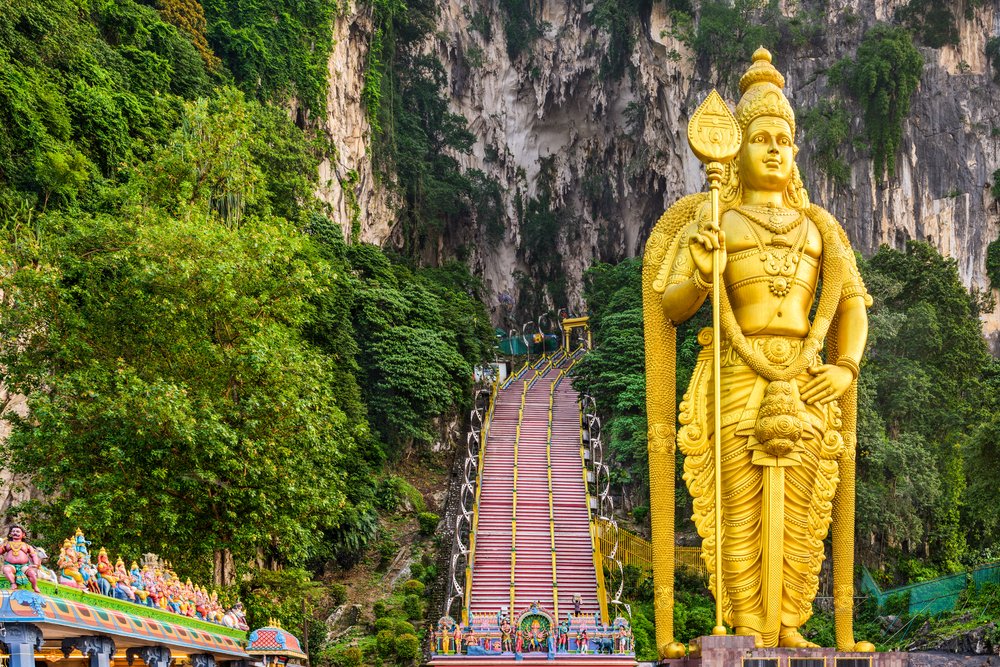
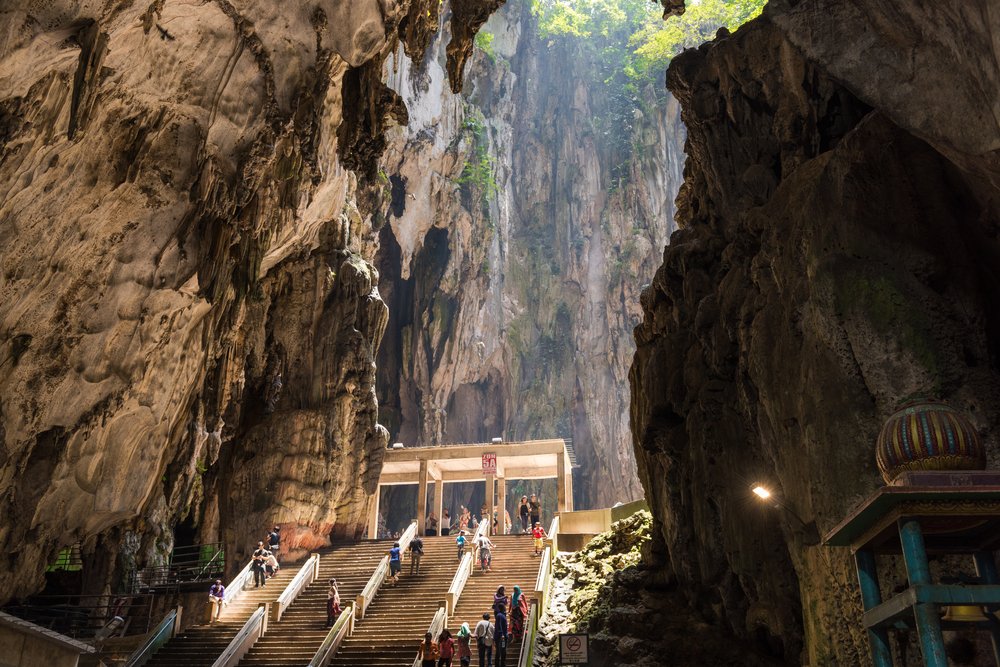
Architecture of Batu Caves
Natural Setting: Batu Caves is nestled within a limestone hill, creating a stunning natural backdrop for its religious and cultural structures.
Main Cave – Cathedral Cave: The main attraction, Cathedral Cave, features a high vaulted ceiling and openings that allow natural light to illuminate the cavern.
Hindu Shrines and Statues: Inside the caves, various Hindu shrines are adorned with vibrant murals and intricate carvings, depicting scenes from Hindu mythology. The artistic elements create a spiritual ambiance.
Entrance Statue – Lord Murugan: At the entrance stands a grand golden statue of Lord Murugan, the Hindu god of war and victory. This iconic statue, unveiled in 2006, is one of the tallest of its kind globally.
Golden Lane: Golden Lane, a charming alley within the caves, is lined with small, colorful houses.




Popular Tours for Batu Caves, Malaysia
Explore below our curated selection of Batu Caves guided tours:
Best-Selling Batu Caves Tour from Kuala Lumpur
Kuala Lumpur Suburbs: Batu Caves Half-Day Tour (SIC)
Embark on a captivating 3.5-hour journey through Kuala Lumpur’s picturesque countryside. Uncover the mystical allure of the Batu Caves, where ancient caves and Hindu temples await your exploration. Immerse yourself in the artistry of a Batik Factory, and witness the vibrant colors and intricate designs. To top it all off, savor a breathtaking view of the city, providing the perfect ending to a day of discovery and wonder.
“Probably the best 11 euros I’ve ever spent. The guide, Diva, was very nice and found the right balance between free exploration and informative guidance and was also able to accommodate our individual wishes. […]” Jannik, Nov. 2023 [Source: GetYourGuide]
Top-Rated Batu Caves and Temple Tour
From Kuala Lumpur: Batu Caves Cultural Temple Tour
Embark on a 4-hour sightseeing tour from Kuala Lumpur to explore the Batu Caves, a significant site for Hindu pilgrims. Ascend the 272 steps leading to the majestic golden statue of Lord Murugan, taking in the spiritual ambiance. Following this, visit the 6-tier Chinese temple of Thean Hou. This tour promises an insightful exploration of the city’s religious traditions!
“Nesh – my tour guide was absolutely fantastic! He picked me up on time and took me to all the sites! His English was incredible and he spoke very clearly! His knowledge on the history of all the sites was amazing, and he knew all the little fact […]!” Laura, October. 2024 [Source: GetYourGuide]
Most Popular Batu Caves Combo Tour
Private Guided Tour of Kuala Lumpur with Petronas Twin Towers & Batu Caves
Discover two of the best attractions of Kuala Lumpur on an exclusive 8-hour private tour, featuring the Petronas Twin Towers and the stunning Batu Caves. Enjoy hassle-free hotel pick-up and drop-off, an expert English-speaking guide, and included tickets to the iconic Twin Towers!
“The guide was great and although the city basically closed for the Kings coronation still mde the tour very good. We picked the tour becasue we wanted to see the Batu Cave and the Petronas tower but we saw loads more.” Andrew, August 2024 [Source: Headout]
Most Convenient Kuala Lumpur and Batu Caves Tour
Private Full-Day 10 Wonders Tour of Kuala Lumpur
Embark on a private, full-day tour of Kuala Lumpur’s top 10 wonders, featuring a visit to the stunning Batu Caves along with the impressive Petronas Twin Towers and KL Tower SkyBox. Enjoy skip-the-line access, seamless hotel transfers, and a knowledgeable guide to ensure a memorable and hassle-free adventure!
Be the first to leave a review!

